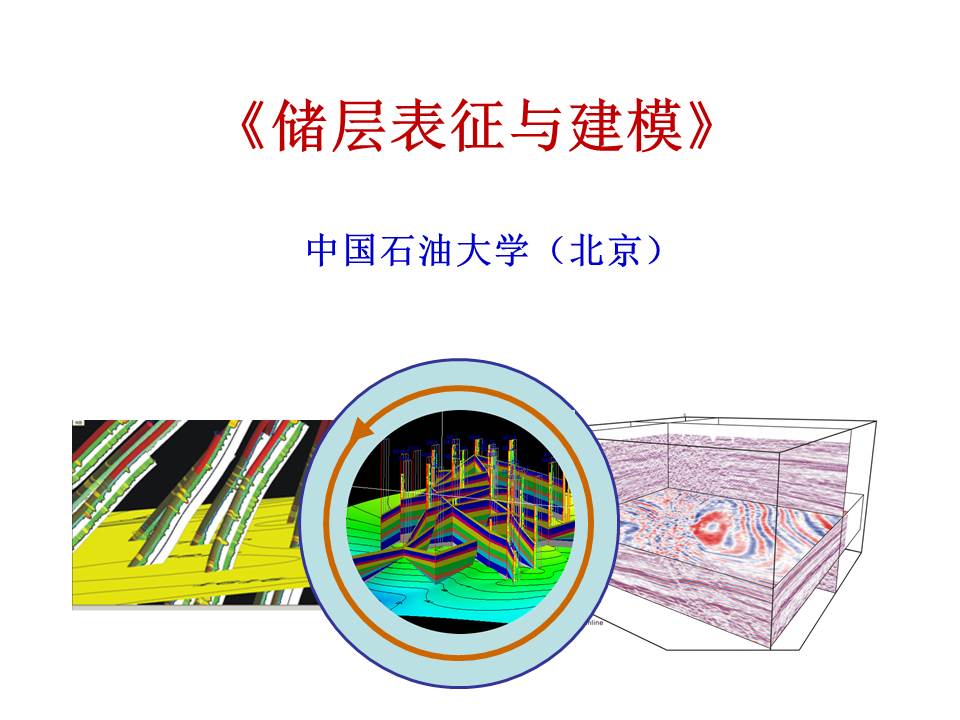
当前课程知识点:Fundamentals of Inorganic Materials Science > 3 Solid solution > 3.1 The classification of solid solutions > 3.1 The classification of solid solutions
返回《Fundamentals of Inorganic Materials Science》慕课在线视频课程列表
返回《Fundamentals of Inorganic Materials Science》慕课在线视频列表
同学们好
从今天开始
我们来学习固溶体
这部分的主要内容有固溶体的分类
置换型固溶体的形成条件
以及影响溶解度的因素
间隙型固溶体常见实例及形成的难易程度
最后是固溶体的研究方法
要求大家掌握
影响固溶体中溶质离子溶解度的因素
以及固溶体的常见类型
能比较判断不同结构形成固溶体的难易程度
应用固溶体的研究方法
确定材料中杂质缺陷的类型
我们首先来看什么叫固溶体
固溶体是指将外来组元引入晶体结构中
占据主晶相中一部分质点位置或间隙位置后
仍保持一个晶相
即溶质溶解在溶剂中形成固溶体
这里我们要与化合物和混合物区分
对于固溶体来说
晶体A和B之间以原子尺度混合
成为单相均匀晶态物质
而混和物A+B
A和B以颗粒态混合
A和B分别保持本身原有的结构和性能
AB混合物不是均匀的单相而是二相或多相
形成化合物时AB有固定的比例关系
AB化合物的结构不同于A和B
这三个概念大家一定要区分开来
固溶体普遍存在于无机固体材料中
材料的物理化学性质
随着固溶度的不同会发生明显变化
材料中经常采用生成固溶体提高和改善材料性能
比如
after dissolve 0.5-2 wt% Cr3+ in Al2O3
Al2O3晶体中溶入0.5~2wt%的Cr3+后
由刚玉转变为有激光性能的红宝石
PbZrO3和PbTiO3固溶生成锆钛酸铅压电陶瓷
广泛应用于电子
无损检测
医疗等技术领域
Si3N4和Al2O3之间形成塞隆固溶体
作为高温结构材料等
这种固溶体具有高温强度大
下面我们来看固溶体的分类
按溶质原子在溶剂晶格中的位置分类
可分为置换固溶体和间隙固溶体
首先
看置换固溶体
如图所示
黄色质点进入晶体中
取代了正常格点处的红色质点
就形成置换型固溶体
黄色质点代表溶质原子
红色质点代表溶剂原子
例如
MgO-CoO二者之间可以形成置换型固溶体
MgO-CaO
PbZrO3-PbTiO3
和Al2O3-Cr2O3之间
都可以形成置换型固溶体
这个图代表形成间隙固溶体
黑色质点是溶质原子
进入到原来晶体中的间隙位置
形成间隙型固溶体
填隙原子
一般处在阴离子或阴离子团所形成的间隙中
比如
当YF3进入到CaF2中
F-会进入到间隙位
形成间隙型固溶体
还可按溶质原子在溶剂晶体中的溶解度分类
可分为连续固溶体和有限固溶体
当溶质和溶剂可以按任意比例相互固溶时
称为连续固溶体
这时溶质和溶剂都是相对的
也就是说较多的那种是溶剂
较少的是溶质
比如MgO和CoO都是NaCl型结构
离子半径相差很小
二者可形成连续固溶体
相图呈如图所示的特殊形式
是连续封闭的曲线
当溶质只能以一定的量溶入溶剂
超过这一限度就会出现第二相
称有限固溶体
后面学习的相图中例如MgO和CaO相图
他们两个形成的是有限固溶体
相图如图所示
CaO只能以一定量溶解在MgO中
超过限量就会出现第二相CaO
从相图中可以看出溶质溶解度与温度有关
温度升高溶解度增加
这节课我们就讲到这里
同学们再见
-Test for chapter 1
-2.1 Type of defect
-2.2.1 The expression methods of point defects
--2.2.1 The expression methods of point defects
--2.2.1 The expression methods of point defects
-2.2.2 The rules for writing of defect reaction equation
--2.2.2 The rules for writing of defect reaction equation
--2.2.2 The rules for writing of defect reaction equation
-2.3 Calculation of thermal defect concentration
--2.3 Calculation of thermal defect concentration
--2.3 Calculation of thermal defect concentration
-2.4 Non-stoichiometric compounds
--2.4 Non-stoichiometric compounds
--2.4 Non-stoichiometric compounds
-Homework for chapter 2
-Test for chapter 2
-3.1 The classification of solid solutions
--3.1 The classification of solid solutions
--3.1 The classification of solid solutions
-3.2 Substitutional solid solution
--3.2 Substitutional solid solution
--3.2 Substitutional solid solution
-3.3 Interstitial solid solution
--3.3 Interstitial solid solution
--3.3 Interstitial solid solution
-3.4 The research method of solid solutions
--3.4 The research method of solid solutions
--3.4 The research method of solid solutions
-3.5 Questions for crystal imperfection and solid solution
--Questions for crystal imperfection and solid solution
-Homework for chapter 3
-Test for chapter 3
-4.1 Melt structure
-4.2 The properties of the melt
--4.2.1 The properties of the melt_viscosity
--4.2.2 The properties of the melt_surface tension
--4.2 The properties of the melt
-4.3 The characteristics of glass
--4.3 The characteristics of glass
--4.3 The characteristics of glass
-4.4 The formation of glass
--4.4.1 The formation of glass_kinetics conditions
--4.4.2 The formation of glass_crystal chemical conditions
-4.5 The structure of glass
-4.6 The typical glass
-4.7 Questions for melt and glass
--Questions for melt and glass
-Test for chapter 4
-5.1 Phase equilibrium in silicate systems
--5.1 Phase equilibrium in silicate system
--5.1 Phase equilibrium in silicate system
-5.2 One-component system phase diagram
--5.2 One-component system phase diagram
--5.2 One-component system phase diagram
-5.3 Applications of one-component diagrams
--5.3 Applications of one-component diagrams
--5.3 Applications of one-component diagrams
-5.4 Binary diagrams
--5.4.1 Binary diagram with eutectic point
--5.4.2 Binary system with a congruent melting compound and one with an incongruent melting compound
--5.4.3 Other five types of phase diagrams of binary systems
-5.5 Applications of binary phase diagrams
--5.5 Applications of binary phase diagrams
--5.5 Applications of binary phase diagrams
-5.6 Ternary diagrams
--5.6.1 Representation of ternary system composition
--5.6.1 Representation of ternary system composition
--5.6.2 Three-dimensional state diagram and plane projection diagram of a simple ternary system
--5.6.2 Three-dimensional state diagram and plane projection diagram of a simple ternary system
--5.6.3 (1) Basic types of ternary phase diagrams
--5.6.3 (2) Basic types of ternary phase diagrams
--5.6.3 (3) Basic types of ternary phase diagrams
--5.6.3 Basic types of ternary phase diagrams
-5.7 Applications of ternary phase diagrams
--5.7 Applications of ternary phase diagrams
--5.7 Applications of ternary phase diagrams
-5.8 Research methods of phase equilibrium
--5.8 Research methods of phase equilibrium
--5.8 Research methods of phase equilibrium
-5.9 Questions for phase equilibria
--Questions for phase equilibria
-Homework for chaper 5
-Test for chapter 5
-6.1 Overview of diffusion
-6.2 The kinetic equations of diffusion
--6.2 The kinetic equations of diffusion
--6.2 The kinetic equations of diffusion
-6.3 The thermodynamic equation of diffusion
--6.3 The thermodynamic equation of diffusion
--6.3 The thermodynamic equation of diffusion
-6.4 Diffusion mechanisms and diffusion coefficient
--6.4 Diffusion mechanisms and diffusion coefficient
--6.4 Diffusion mechanisms and diffusion coefficient
-6.5 Diffusion in solid
-6.6 Factors affecting diffusion
--6.6 Factors affecting diffusion
--6.6 Factors affecting diffusion
-6.7 Questions for diffusion
-Homework for chaper 6
-Test for chapter 6
-7.1 Overview of solid state reactions
--7.1 Overview of solid state reactions
--7.1 Overview of solid state reactions
-7.2 Kinetic equation of solid state reaction
--7.2 Kinetic equation of solid state reaction
-7.3 Factors affecting the solid state reaction
--7.3 Factors affecting the solid state reaction
--7.3 Factors affecting the solid state reaction
-Homeword for chapter 7
-8.1 The categories of phase transformation
--8.1 The categories of phase transformation
--8.1 The categories of phase transformation
-8.2 Crystallization
--8.2.1 Crystallization thermodynamics
--8.2.2 Crystallization kinetics
-8.3 Phase Separation of glass
--8.3 Phase separation of glass
--8.3 Phase separation of glass
-8.4 Questions for phase transformation
--Questions for phase transformation
-Test for chapter 8
-9.1 Overview of sintering
-9.2 The driving forces and models of sintering
--9.2 The driving forces and models of sintering
--9.2 The driving forces and models of sintering
-9.3 Solid state sintering
--9.3.1 Evaporation-Condensation mass transfer
--9.3.2 Diffusion mass transfer
-9.4 Liquid phase sintering
--9.4.2 Solution-Precipitation mass transfer
-9.5 Grain growth and secondary recrystallization
--9.5.2 Secondary recrystallization
--9.5 Grain growth and secondary recrystallization
-9.6 Factors affecting sintering
--9.6 Factors affecting sintering
--9.6 Factors affecting sintering
-9.7 Questions for sintering
-Homework for chapter 9
-Test for chapter 9



